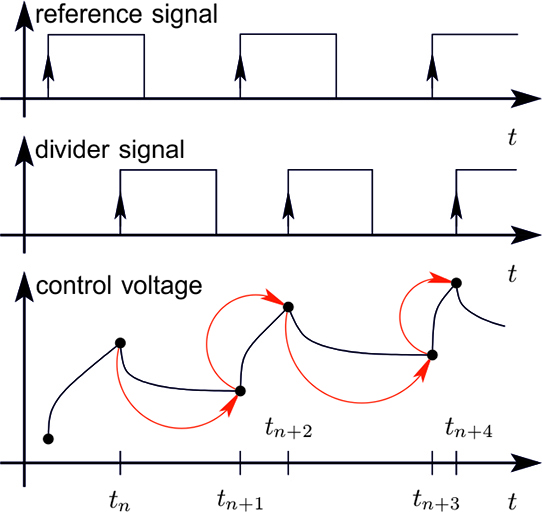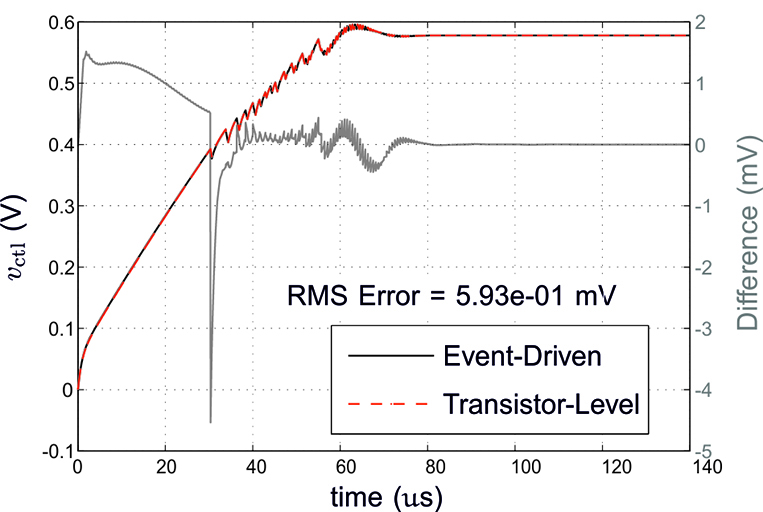Very fast and efficient modeling and simulation methods for mixed-signal systems like the CP-PLL



Introduction
The CP-PLL is an integrated mixed-signal circuit and is used in modern systems like mobile phone and wireless internet access. Since a CP-PLL used for frequency synthesis has a mixed-signal architecture, it is difficult to use general theory to characterize its nonlinear behavior and challenging to achieve a robust system design. Therefore, linear models and simulations are used. The disadvantages are the limited validity, the a priori approximation and the long simulation time. Thus, it is necessary to use a more time-efficient modeling approach to consider nonideal and nonlinear effects.
Event-driven modeling
The Event-Driven (ED) model is based on the phase information of the reference and feedback signal of the PLL. Only when a rising edge triggers the PFD, the loop responds to the phase error. Thus, it is sufficient to calculate all PLL-states at the triggering events only. These calculation steps correspond to an iterative algorithm allowing to model an arbitrary ordered Fractional-N and Integer-N PLL including nonlinear and nonideal effects.
Event-driven vs. transistor level
To validate the enhanced ED model, first the PLL components are characterized separately based on Transistor Level (TL) simulations. The resulting nonlinear and nonideal characteristics are then included in the ED model. Afterwards the PLL behavior is simulated using both the ED model and the TL platform and results are shown. Both simulations are very similar. The difference between both has its maximum within the locking process where the CP-PLL exhibit a chaotic behavior. After locking the difference converges to zero. Although the ED model is nearly as accurate as the TL platform, the simulation time is highly decreased (see table).
By using this model the characterization and design considering nonlinear and nonideal effects can be done very efficiently. Additionally, Monte-Carlo-Simulations become very time-efficient.
Conclusion
To obtain a very time-efficient simulation methodology for mixed-signal systems, the PLL components are characterized separately based on TL simulations and macroscopically included into the ED model. The comparison of the TL model and the ED approach shows that both simulation results are very similar. Thereby the ED model is applicable to consider nonlinear and nonideal effects. Additionally, it is shown that the ED technique is a very time and computer resource-efficient approach due to speed-up factors up to 10000 compared to TL simulations. Thus, this ED model can be used to efficiently characterize and design mixed-signal systems considering nonlinear and nonideal effects.
 Fraunhofer Institute for Electronic Nano Systems
Fraunhofer Institute for Electronic Nano Systems